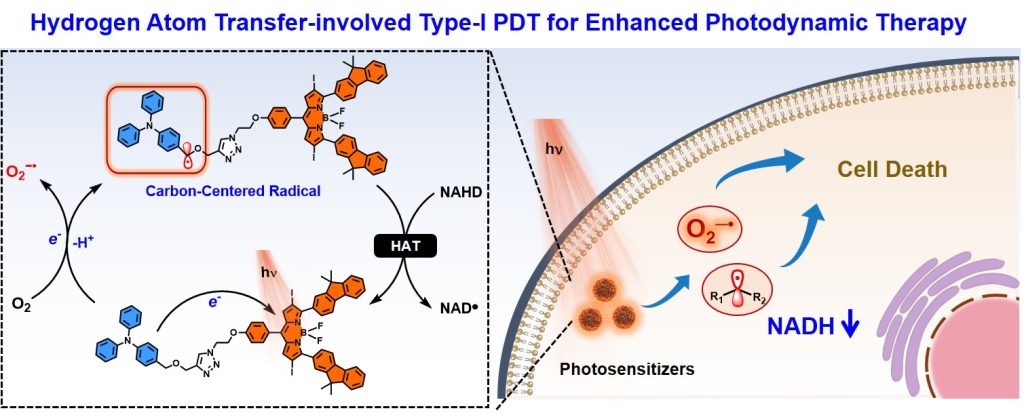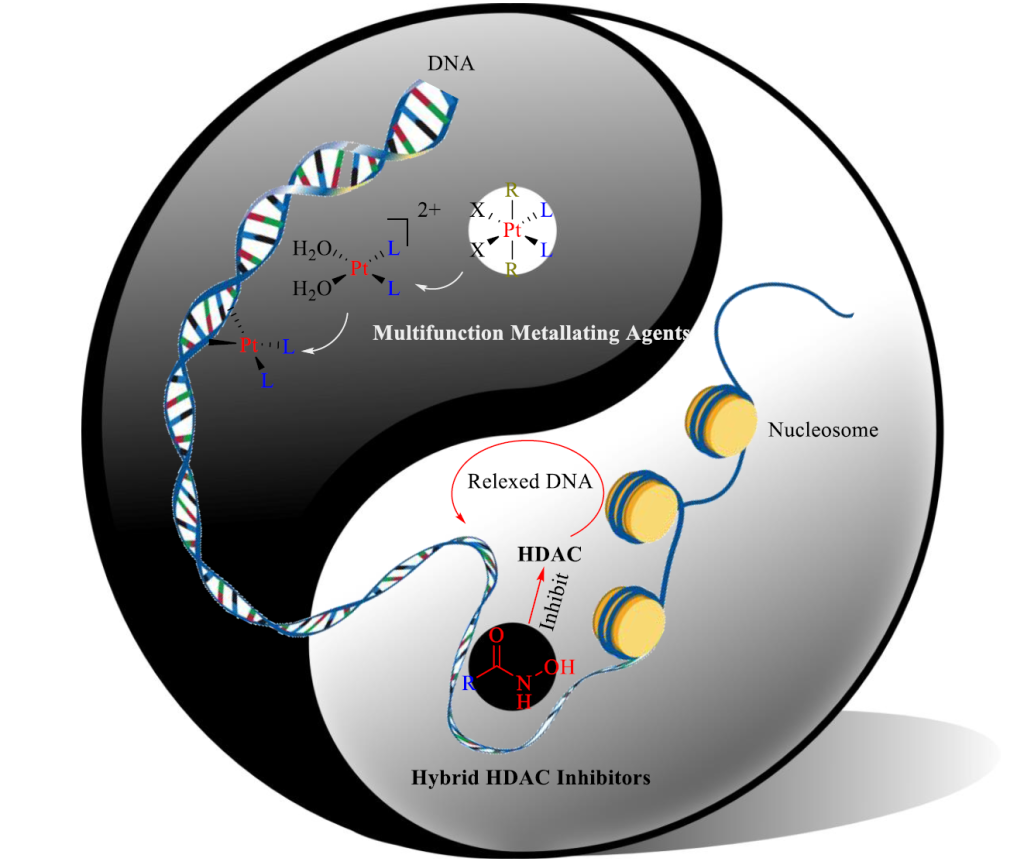Development of Novel Photosensitizer for Type-I Photodynamic Therapy
Qingzheng Yang lab, Beijing Normal University

Photodynamic therapy (PDT) is a promising cancer treatment method that employs photosensitizers (PSs), molecular oxygen and light to generate cytotoxic reactive oxygen species (ROS) that kill cancer cells. Recent advancements have demonstrated that Type-I PDT exhibits reduced dependence on oxygen concentration compared with traditional Type-II PDT. My own research work is to develop novel PSs for PDT, reveil the detailed mechanism behind and test PDT performance.
For detailed process, you can check it in this blog.
Derivatizing Pt-based Drugs and Incorporating HDAC Inhibition
Kin Zhao lab, University of the Pacific

Platinum-based anticancer drugs have been approved for clinical use worldwide for decades. Usually, they causes the distortion of DNA by coordinating to basic group G and A . If the cell cannot repair the damage, it will go apoptosis.
So, it’s a logical design to involve the installation of HDACi on the platinum center as a non-leaving group ligand. HDACi is histone deacetylase inhibitors, which can inhibit histone deacetylase’s activity and cause more relaxed chromatin. When the bifunctional drug reaches the cancer cell, the synergistic effect could be maintained as the relaxed chromatin structure makes DNA more susceptible to be attacked by the platinum centers, thus increase the anticancer activity and possibly selectivity toward cancer cells.
My work was to design and synthesis novel ligands involving HDACi function and evaluate their properties.
Stereocontrolled radical polymerization enabled by supramolecular interaction design.
Mingjiang Zhong lab, Yale University